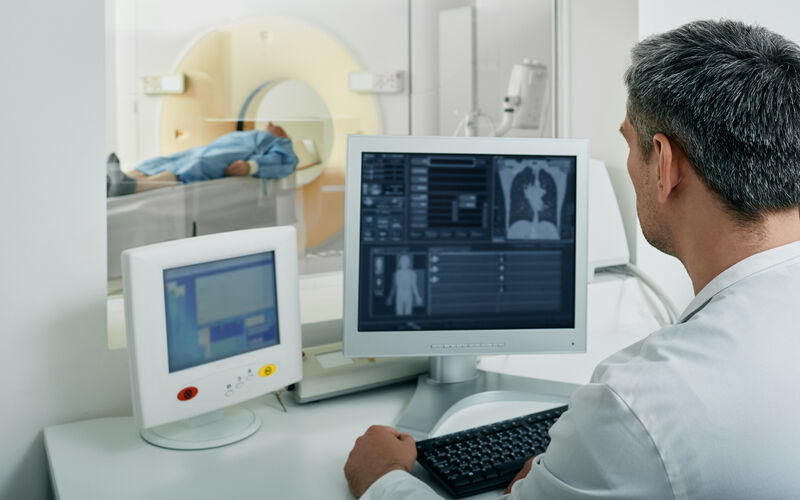Study Shows Increase in Lung Cancer Screening After Guideline Changes
Lung cancer continues to be the leading cause of cancer deaths in the United States and the second most common cancer for both men and women. Early detection is a patient’s best shot at a cure.
In January of this year, the National Comprehensive Cancer Network changed its guidelines for lung cancer screening. Previously, high-risk individuals eligible for screening were classified as those 50 or older and a current or former smoker with a 20-pack-year smoking history.
Now, the recommendation has been extended to include those with a 20-year history of cigarette use. This means someone who has smoked a total of 20 years is considered high-risk, regardless of whether those years were consecutive and not considering the number of cigarettes smoked per day.

Matthew Schabath, PhD
“By changing the guidelines like this, we hope the number of people getting screened is going to increase,” said Matthew Schabath, PhD, an epidemiologist at Moffitt Cancer Center. “Everyone who meets the eligibility criteria should be getting screened.”
This comes after the U.S. Preventive Services Task Force changed its recommended screening age in 2021 from 55 to 50. The update also lowered a smoking history of 30 or more pack-years to 20 or more.
A recent study published in JAMA analyzed how the guideline changes in 2021 impacted screening percentages. The study looked at data from 2019 to 2021 using the Behavioral Risk Factor Surveillance System, a national self-report survey system collecting health-related information.
Researchers found that about 15% of participants underwent screening before the guideline changes, compared to around 47% after the updated guidelines were implemented.
Despite this, researchers emphasized cancer disparities have continued, showing lower numbers for those without insurance, without a primary care doctor and those living in rural areas.
One strategy Moffitt’s Thoracic Oncology Department uses to reach individuals in rural areas is the mobile lung cancer screening unit. The unit aims to address disparities in lung cancer screening and detection by bringing the technology directly to underserved communities.
“You may not have a primary care physician, and you may not feel like you have the time to go out and get this done,” Schabath said. “Bringing it directly to the community is a great way to get people screened, and if anything abnormal is found, we detect it earlier. Early detection leads to more treatment options and better outcomes overall.”




